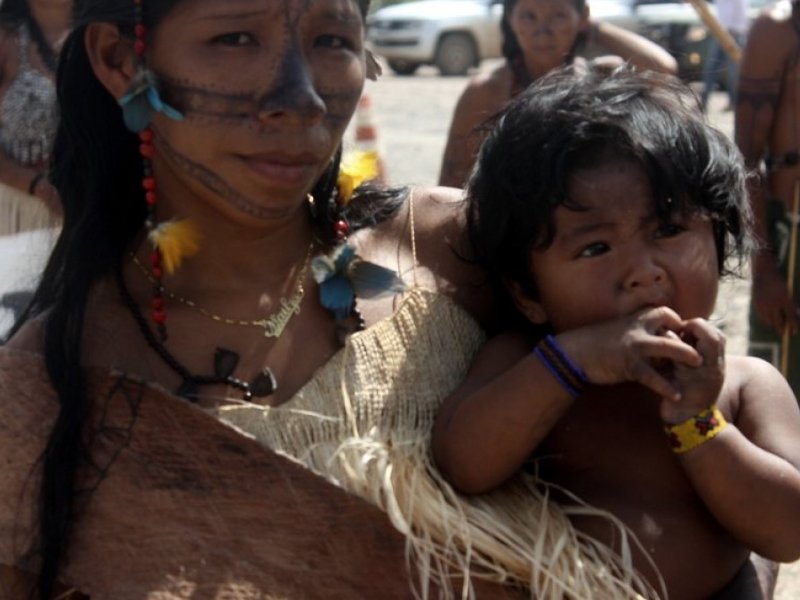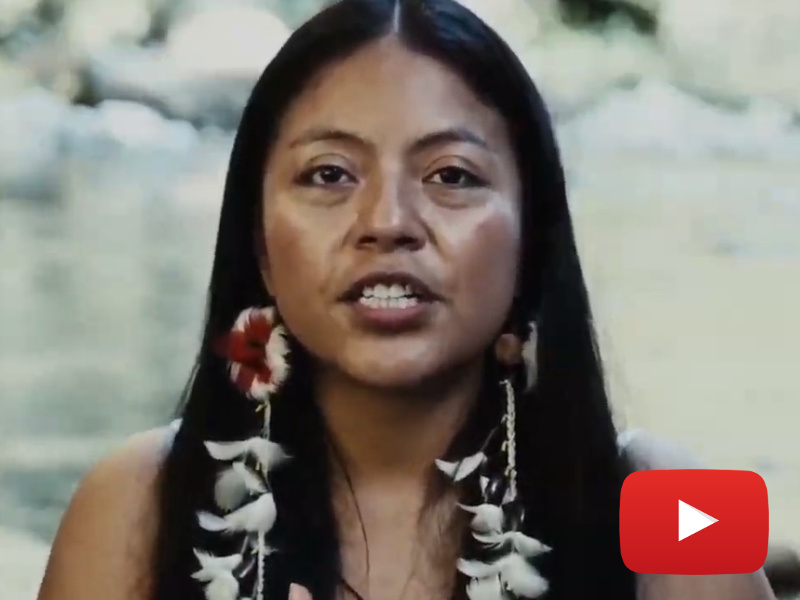
In the last decade, the Brazilian government has advanced an Amazon hydroelectric dam building program of unprecedented proportions. The construction of dozens of large dams is projected across the basin in the coming years, portending untold destruction to one of our planet’s most vital resources. Justified on the basis of growing energy demand, the rivers, forests, and communities of the Brazilian Amazon are falling victim to a reckless and rapacious development agenda that contravenes national socio-environmental standards, while flaunting the country’s commitment to international human rights conventions.
While the Dilma Rousseff administration frames the programme as essential for economic growth and social inclusion, touting recent projects as examples of environmental management and community participation, a more sober assessment exposes a disquieting reality: not one of Brazil’s large Amazon dams respects the basic tenets of the recommendations of the World Commission on Dams. These include demonstrating public acceptance for dams and the consent of indigenous peoples; managing downstream impacts and environmental flows; sharing the benefits with affected communities; and ensuring compliance with national regulations and criteria for project development.
The dam-building programme’s neglect of social and environmental protection is irreconcilable with our global obligation to forge a sustainable development agenda for the 21st century. While the expansion of energy provision is indeed vital for any emergent economy, the lessons learned from Brazil’s hydroelectric dependency – with around 72% of the country’s electricity coming from this single source – signal the need for fundamental policy reform. The adoption of an alternative energy model that spares the Amazon is not only viable; it is essential if we are to preserve this fundamental biome for the benefit of humanity. We simply cannot afford more of the same.
The history of Belo Monte
The Belo Monte mega-dam is the most notorious illustration of a model that shuns responsible project-planning standards and public opinion. Currently under construction on the Xingu River, the Belo Monte mega-dam has been challenged in Brazil’s courts as a result of the failure of project planners to properly consult indigenous and traditional communities on the dam’s social and environmental impacts and has sparked an international campaign for human rights and environmental protection. To placate critics, the project’s environmental license was granted only under a set of socio-environmental, legal and ethical conditions, but these have been largely ignored by the dam-building consortium Norte Energia.
Given carte blanche privileges by the Rousseff Government, Norte Energia has dodged accountability and construction continues despite the socio-environmental chaos. This case illustrates the climate of impunity that surrounds Brazil’s dam-building programme and signals further catastrophe for the Amazon’s rivers and communities.
Lessons for the Tapajós River dam complex
Belo Monte’s history could now repeat itself on the Tapajós River, where the Government’s plan to build an unprecedented complex of large dams and industrial waterways threatens to flood national parks and indigenous lands, and accelerate the destruction of the Amazon by suppressing one of the river’s last wild tributaries.
Given the growing scrutiny of Brazil’s dam-building boom, the Tapajós River is now a key battleground in the global debate on the true costs of our development model and its fate could determine the future of the Amazon region.
The poor track record of poor environmental planning and management of Brazil’s Amazon dams and the uncontrolled influx of migrants they attract suggest that the environmental impact of the Tapajós dams could be even more severe than Belo Monte’s. The Brazilian NGO IMAZON estimates that it could lead to the deforestation of almost 1 million hectares in a once pristine and richly biodiverse region .
The Tapajós dam programme has faced fierce resistance from local indigenous people, furious at the Brazilian government’s violation of their right to be consulted, which is not only an abuse of human rights, but also a policy failure of the highest order.
When Brazil’s Ministry of Mines and Energy (MME) announced the December 2014 auction for the construction of the São Luiz do Tapajós mega-dam, the indigenous Munduruku responded with outrage at the government’s failure to consult them and pledged to resist the dam’s destruction of their river and territory. One day later the MME cancelled the auction over serious irregularities with the ‘indigenous component’ of the environmental impact studies.
Following this blow to the MME’s credibility, Brazil’s indigenous agency FUNAI ‘rejected’ the viability studies given the dam’s irreversible impacts on indigenous communities, particularly flooding and forced displacement. FUNAI cited Article 231 of Brazil’s Constitution, which prohibits the uprooting of indigenous peoples from their lands. While FUNAI has no authority to stop the programme, its condemnation presents a serious political challenge to the Government.
The marginalization of indigenous rights is also directly responsible for Belo Monte’s 1-year delay and major cost overruns, as indigenous-led protests have repeatedly paralyzed the dam’s construction. Brazilian taxpayers are paying the price of this dreadful planning, given the immense public finance backing to the US$14 billion project.
Looking ahead
A recent study of dams worldwide has found that mega-dams are simply not worth building, given their vast social, economic and environmental impact. It is increasingly clear that the true and exorbitant price of a development paradigm that strives for ‘energy at all cost’ greatly outweighs its benefits.
If the Brazilian Government were serious about project design and approval processes that meet the standards established by the World Commission on Dams, projects like Belo Monte and the disastrous Tapajós complex would never have seen the light of day. Sadly, however, the grim lessons of Belo Monte have eluded Brazil’s energy planners as they pursue yet another devastating and unnecessary project.
New dams on the Tapajós are avoidable because there are plenty of viable alternatives. The Government could serve its own people, and humanity as a whole, by diversifying its energy matrix – focusing particularly on the development of solar and wind power – alongside rigorous energy efficiency measures.
This challenge is far less technical and financial than it is political: urgent and sweeping policy reform is a question of forward thinking and political will.
So Brazil has a choice to make. It could become a world leader in truly sustainable and ethical development, sparing the Amazon and its people’s further tragedy. Or it could continue along its current dangerous path towards a future based on dirty energy.













